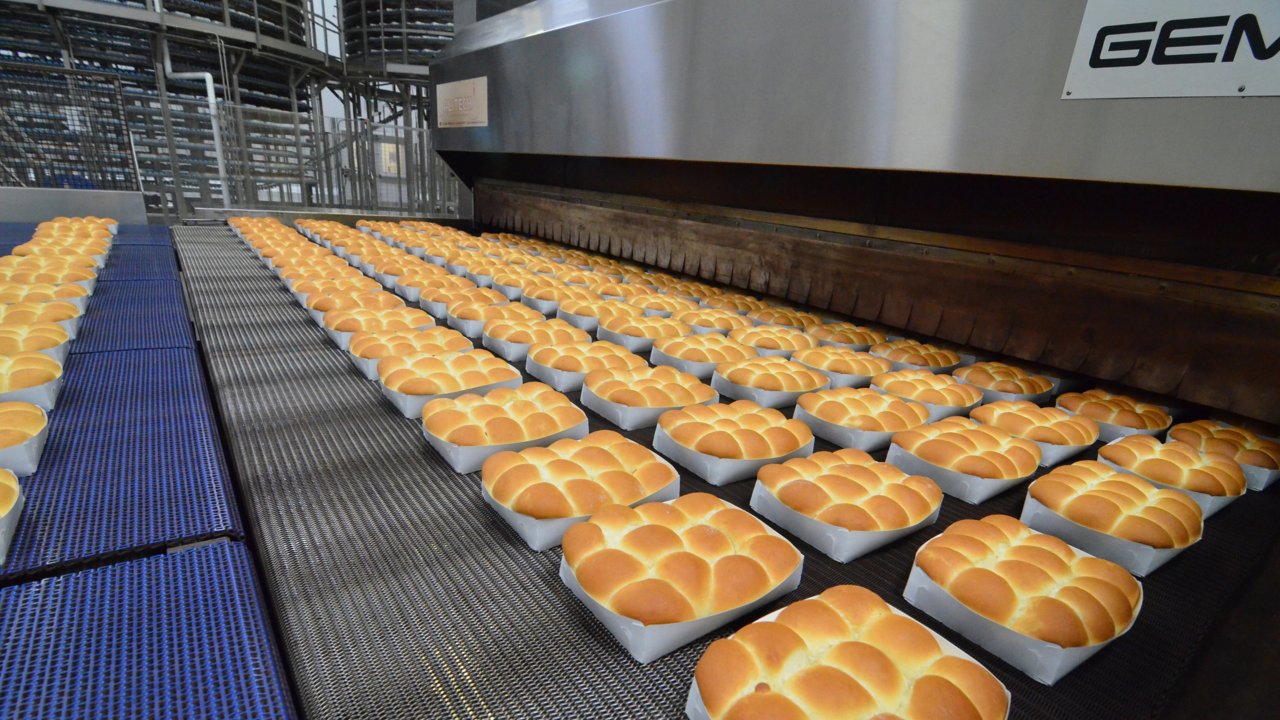Solutions
In less than a year, the company had to specify and procure equipment from more than seven suppliers, integrate it, and test its reliability to meet production volumes of 8,000 pounds of bread per hour.
Williams worked with his team and Bachelor Controls Inc. (BCI), a Rockwell Automation Solution Partner, to create an architecture that would enable King's Hawaiian to meet its short-term goals of getting the equipment up and running to open the plant on time, while laying the groundwork for information gathering and sharing throughout the enterprise.
“BCI put a lot of emphasis on front-end design and forced me to be a better customer,” Williams said. “They made us work hard to answer important questions up front so they could provide a return that was closer to what we actually wanted versus what we started with.”
As the integrator on the project, BCI gathered the controller and human-machine interface (HMI) requirements from each OEM and wrote an overall specification standardized on the Rockwell Automation Integrated Architecture™ system. BCI then worked with Rockwell Automation to validate the system's design.
“We wanted to establish a common configuration for the OEMs so that everything would connect easily and communicate well,” said Rusty Bailey, Memphis office branch manager, BCI. “We also understood the bigger picture: King's Hawaiian needed to be able to monitor its process across the enterprise and make intelligent decisions to increase production efficiency.”
BCI directed all the OEMs to use the Allen-Bradley® ControlLogix® programmable automation controller (PAC) featuring an integrated platform for scalable motion and machine control in a single programming environment. This integration provides King's Hawaiian with fewer spare parts to maintain, while the control platform's openness helps ensure easy integration with third-party components.
The specifications also required a standardized approach to the visualization and information software used on each machine. FactoryTalk® View Site Edition software is used on each machine to simplify application development and training – a crucial time-saving element on a fast-turnaround project. BCI specified the Site Edition version of the software to make it easier for the King's Hawaiian team to manage upgrades on its own long-term. Each version of the visualization software is then running on Allen-Bradley Industrial Environment Computers with a separate touch screen and solid-state hard drive to protect the system and reduce the number of failures in the future.
For the packaging machines, BCI specified Allen-Bradley CompactLogix™ PACs and Allen-Bradley PanelView™ Plus HMIs. The scalability of the Integrated Architecture system allowed BCI to use the smaller controller, which provides all the benefits of the Logix control platform, but in a smaller form factor.
The entire plant communicates via EtherNet/IP™. The single network architecture helped the company get the plant online faster and lowered the Total Cost to Design, Development and DeliverSM the machines. EtherNet/IP also allows King's Hawaiian engineers to remotely access, diagnose and service their machines from two redundant VMware servers located in a central control room.
“By standardizing on the Integrated Architecture system, our people are now able to go from one process to another within the plant, and use the same software and same knowledge to address any number of issues,” Williams said. “The architecture also allows us to collect vast amounts of data – about everything from oven temperatures and bake times to scale weights and maintenance operations – that previously we couldn't manage manually.”
Production information is saved, stored and managed using FactoryTalk Historian software that collects and archives time-series data from all equipment and data sources in the plant. FactoryTalk VantagePoint software correlates and aggregates the information and produces real-time dashboards and web-based reports with unique situational and historical context for different users. Williams and others across the company can access the data using FactoryTalk ViewPoint software, which allows them to monitor operations remotely from any location where Internet access is available.

